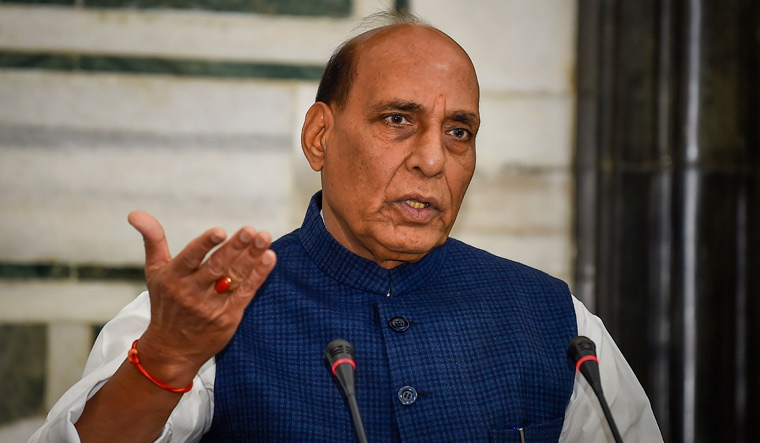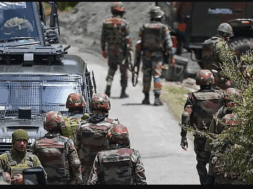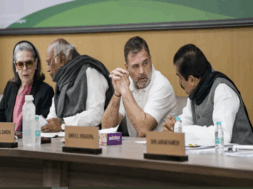
NEW DELHI, Feb 11: India and China have reached an agreement for disengagement in the Pangong Lake area to cease their forward deployments in a phased, coordinated and verified manner and it will substantially restore the situation to what it was before the stand-off last year, Defence Minister Rajnath Singh informed the Rajya Sabha on Thursday.
Making a statement in the House, Singh said as part of the agreement on disengagement, the Chinese People’s Liberation Army (PLA) will move its forces to the east of Finger 8 on the north bank, and the Indian Army will move to its base near Finger 3. The minister said India and China also agreed to temporarily suspend their regular patrolling activities on the north bank.
“The Chinese side will keep its troop presence in the north bank area to east of Finger 8. Reciprocally, the Indian troops will be based at their permanent base at Dhan Singh Thapa Post near Finger 3. A similar action would be taken in the south bank area by both sides,” he said.
“These are mutual and reciprocal steps and any structures that had been built by both sides since April 2020 in both North and South Bank area will be removed and the landforms will be restored,” he said.
Further, both sides had agreed on a temporary moratorium on military activities in the North Bank, including patrolling in the traditional areas.
“Patrolling will be resumed only when both sides reach an agreement in diplomatic and military talks that would be held subsequently,” Mr. Singh added.
China had issued an official statement on Wednesday on the disengagement process. People’s Liberation Army (PLA) Senior Colonel Wu Qian, spokesman for the Ministry of Defence, had said in a statement issued in Beijing: “According to the consensus reached by the ninth round of the commander-level talks between China and India, the frontline units of the Chinese and Indian armed forces on the south and north banks of Pangong Lake started to disengage synchronously in a planned manner.”
Rajnath Singh told the Rajya Sabha that both the armies agreed to pullback forces in a “phased, coordinated and verifiable manner.” He said within 48 hours of “full disengagement” in these areas, senior Indian and Chinese commanders will meet again to discuss further disengagement at other friction points.
This is the first significant movement in negotiations to ease tensions in more than eight months—disengagement in Galwan valley took place in early July 2020 but it did not progress in other areas.
The minister’s statement comes on the back of limited withdrawal of front-line troops by the Indian and Chinese armies from the Pangong Tso area on the contested Line of Actual Control (LAC). The development has turned the spotlight on how the broader disengagement plan will unfold in other flashpoints where rival soldiers are deployed eyeball to eyeball and where previous attempts to reduce military tensions have failed.
The implementation of this agreement has started yesterday in the north and south bank of the Pangong Lake. It will substantially restore the situation to that existing prior to commencement of the standoff last year,” he said.
The Finger Area was until now the toughest part of the disengagement process.
“I want to assure this House that in these talks we have not conceded anything. The House should also know that there are still some outstanding issues with regard to deployment and patrolling at some other points along the LAC in Eastern Ladakh. These will be the focus of further discussions with the Chinese side. We have agreed that both sides should achieve complete disengagement at the earliest and abide fully by the bilateral agreements and protocols. By now, the Chinese side is also fully aware of our resolve,” Singh said.
The mutual pulling back of tanks and infantry combat vehicles from heights on the southern bank of Pangong Tso began on Wednesday a fortnight after military commanders of the two armies agreed on January 24 to push for an early disengagement of their frontline troops.
The Chinese People’s Liberation Army’s (PLA) aggressive forward deployments in the eastern Ladakh theatre have hindered the Indian Army’s patrolling patterns in several areas including Depsang, Finger Area on the northern bank of Pangong Tso, Gogra and Kongka La.
Regaining access to several areas that are now difficult to reach due to actions by the Chinese army along LAC is critical, experts said.
(Manas Dasgupta)













